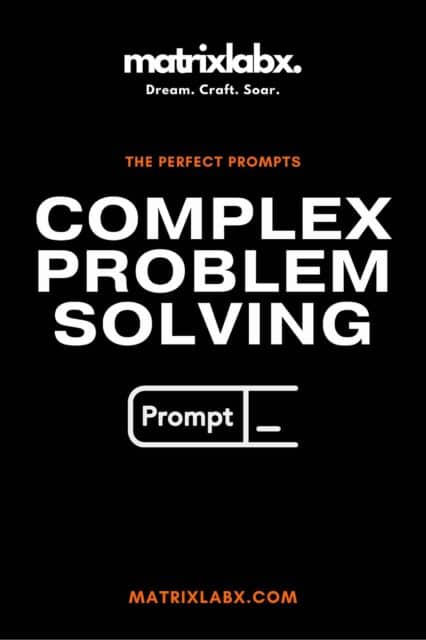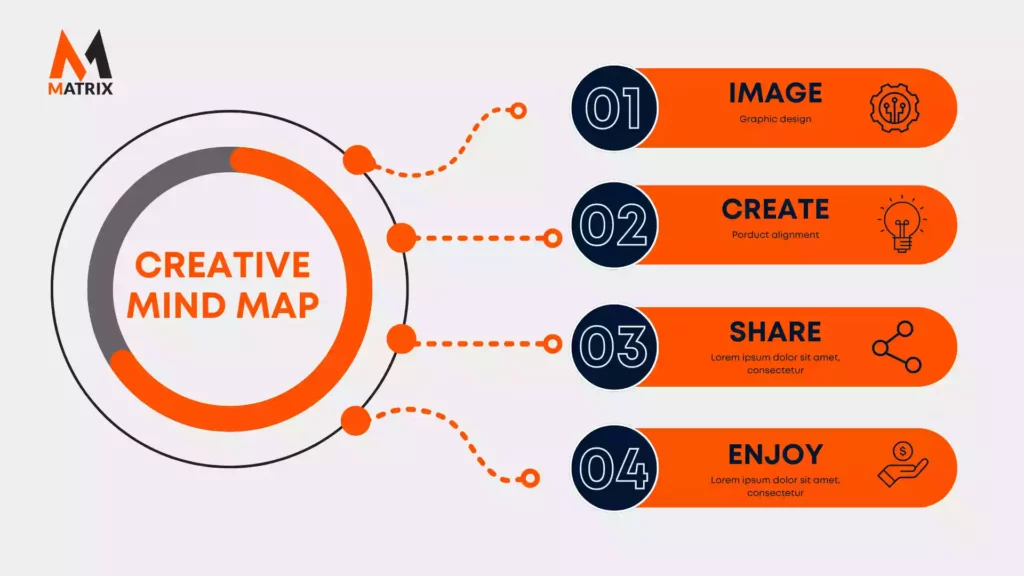Content Clusters are critical to SEO, often pillar content.
If you’re engaging in content strategy and planning, you probably know what content clusters are.
Content clusters are instrumental, even more so if your content is part of your core SEO techniques – as it should be.
Since organic results are the main “provider” of traffic, the fact that there’s an increasing need for brands and companies to boost their SEO game is evident – even more so since marketers know that consumers won’t move past the first page of the SERPs.
The first step is to benchmark your competition and your current state. Here’s an example of recent site traffic for a new client of Matrix Marketing Group.

Competition is fierce, which makes SEO a priority. And SEO is now being leveraged through a content cluster model. But what is that, exactly?
What is a content cluster: A Definition
The main idea of content groups is that a brand decides on the pillar content. A content collection is a subject that encompasses all of the content pieces present on the website. The content created after that is relevant to the pillar content.
Generally, your pillar content needs to be relevant to – or focused on – the keyword that best describes your brand and has a discernible search volume. The topic sets focused on your pillar content, which must be built around relevant keywords that are more specific and reachable regarding their search volumes.
Let’s assume you’d like to focus your efforts on email marketing. You will create your pillar content with the keyword “email marketing” in mind.
Now, you will need to have topic clusters that will be talking about smaller keywords related to email marketing, like “email marketing for beginners,” “A comprehensive guide for eCommerce email marketing,” “how to build your email list,” and so on.
The idea is to have the topic clusters link back to your pillar content, thus creating a trustworthy – by SERP standards – “network” for your content.

All in all, the “pillar content” is pretty much the hub that links to – and is linked to – all of the other pieces of content.
In Google’s eyes, this technique creates a neat, tidy, organized model that is easy to crawl – for its machines – and easy to use – from a UX perspective.
Not to mention that breaking down a high search volume keyword into smaller clusters that link back to a centerpiece shows Google that you’ve got authority on the subject matter – especially if we’re talking about well-written, no-fluff content.
Why Content Clusters Help With SEO

Let’s go into a little more detail here. Your pillar content is what your brand is all about, which you need search engines and prospects to know.
Therefore, your pillar content should make your value super clear to both bots and humans and be present every step of the way, from building your content calendar to its implementation.
For example, when you’ve got a lengthy and detailed blog post about digital marketing, you need your Facebook marketing, Instagram growth, social media growth, and email marketing blog posts to be linked back to this centerpiece.
Ensure that you frequently update your centerpiece and the supporting blog posts with new data and information. The more you do that, the easier it is for Google to know that you’re an expert in the field and urge users to look at your content by pushing it to the SERPs’ top positions.
What About User Intent?
Understanding user intent and creating content that corresponds with it and works to your advantage might be one of the hardest things to do regarding SEO. And it’s hard because it’s common to misinterpret user intent.
The most deciding factor is bounce rates and led conversions.
A marketer’s objective is to give the users what they want in just a few clicks – or one. This means they need a firm grasp of the search terms people enter in search engines related to their pillar content or brand.
So, let’s see what questions people are asking when it comes to email marketing:
As you can see, most people want to know more about email marketing, how to do it properly, why it is important, and so on. And since our pillar content revolves around email marketing, these are some questions to answer. These will create content sets that revolve around your pillar content. You will learn how to create content clusters for SEO, Matrix Marketing Group content clusters, and more.
That way, you will satisfy the user who intends to learn more about email marketing, and Google will reward you for that.
Why Keywords Just Won’t Cut It Anymore
It all comes down, again, to user intent. Nowadays, users search for “the best pr plan ideas for 2021”, not just “AI digital marketing plans” or “AI digital strategy tips,” as they used to some years ago.
And since the users are looking for something as detailed as that, they’ll need to find content that contains more than just keywords that can rank.
Not to mention that most people may not be searching for something as specific as “best Netflix movies.” They may be in for a “What should I watch tonight?” question. They may not be asking Google, even, but a voice assistant.
Still, Google aims to give the most relevant results, meaning it will search for content that will answer detailed and vague questions.
And this is why content sets that lead to a pillar content piece are needed. Thin, keyword-packed content can’t answer either question, as the first is too specific, while the second is too vague.
How to Create Your Content Cluster Strategy
Content clusters are the topics linking back to your pillar content. Your pillar content helps define and bind everything together. So, how are you going to create your content groupings in a way that will benefit your SEO efforts?
Establish Your Goals
Content is king for SEO because it helps brands reach their marketing goals. This is where marketers need to establish the goals their content will help them achieve and find a way to align with their goals and metrics.
Before creating your clusters, consider what you must achieve when changing your SEO approach – especially since it’s difficult.
Are you hoping for more exposure? Better customer engagement? What goals would you like to reach, and what is a good conversion? What keywords would you like to focus on to get that conversion?
Answering the questions above will help you understand your goals better and have more clarity regarding the marketing strategy you will follow.
And it will make the next couple of steps easier to comprehend.
Define Your Buyer Personas
You can’t know your users’ intent if you don’t know your users. And you can’t understand your users if you don’t create buyer personas.
Your buyer or customer personas represent your ideal prospect or customer.
You can create a buyer persona by studying your customers’ journey through your data or surveys to help you understand your strengths and weaknesses according to your audience.
Be as specific as possible:
- Are your personas married?
- What is their level of education?
- What are their problems?
- What do they want from life?
- What are their pain points?
- How are you going to help them achieve their goals?
The answers to the questions above are the basis of your content clusters. So, next off, you will need to conduct a keyword search to answer those questions.
Look for keywords that are relevant to the general umbrella term and can best describe you. This will allow search engines to understand everything about the topics you will use, from small clusters to the pillar content.
If, for example, you want to talk about online payments, and your buyer personas are small business owners, you can’t possibly skip the “online payments for small businesses” keyword.
Create a list with keywords that will help you create the content that can answer all of your prospects’ questions – since it can answer those of your personas.
Use long-tail keywords, and study the keywords your competitors rank for, as it will give you an excellent idea about what your audience is looking for in a brand.
Achieve a Competitive Edge with Precision Market Segmentation and Strategic Positioning
Define Your Existing Content
Suppose you’re not a newbie and are trying to remodel your website and utilize all the SEO benefits content clusters can give you. In that case, you must define your existing content to correspond with your content clusters.
First of all, split your existing content into topics and categories. This will help you figure out what keywords you’ve already used and the ones you can use to create content in the future.
Next, see if there’s duplicate, thin, irrelevant, or anything that could harm your content strategy and throw you off track.
Each piece of content needs to be reviewed very closely; otherwise, you won’t be able to remove content that is no longer valuable or changes and enrich content that doesn’t rank or has outdated information.
Once you understand your content covers, you will know what content clusters you’ve created.
Create Your Pillar Page

The pillar page is the centerpiece that binds all content clusters together.
Knowing the specific topic or subject matter you are referring to would be helpful in providing the best keywords for cluster content. However, here are some general keyword suggestions for creating effective cluster content:
- Topic or theme: Identify the main subject matter and use it as a primary keyword.
- Subtopics: Break the main topic into smaller, related subtopics to target specific aspects.
- Long-tail keywords: Use longer and more specific phrases relevant to your content.
- Synonyms: Include alternative terms or phrases that different audiences may use.
- Location-specific: Include location-based keywords if your content targets a specific geographic area.
- Industry jargon: Use niche-specific terminology to connect with a specialized audience.
- Trending topics: Incorporate currently popular or trending terms related to your content.
- Competitor analysis: Research competitor keywords and identify gaps to differentiate your company content.
- User Intent: Consider the goals and motivations of your target audience when selecting keywords.
- Search engine optimization (SEO): Optimize your content with relevant keywords to improve search engine rankings.
Remember that these are general suggestions, and the specific keywords you should use will depend on the subject matter of your cluster content.
The main idea is for your content to look like this:
Of course, there is no pillar page if you don’t identify and create your clusters first, and there are no clusters if they cannot be tied to the hub that is your pillar page.
Your pillar page needs to be broad enough to link to all of your clusters and be linked. But how are you going to create it?
First, you’ll need to find the core content of your pillar page. Here are the characteristics of the keyword that will be the basis of your core content:
- It is broad and industry-specific
- It can be educational
- It’s not a long-tail
- It is on par with your product or service
If you’re starting your blog or website, you will create your pillar page from scratch. But if you’ve already got some material, you can choose an existing piece as a pillar page. Like so:
- Find the best-performing post that has a broader topic.
- Create internal links between your clusters and the post you decide to use as your pillar page.
Your cluster content pieces should have internal links and be connected to your pillar page. Like a puzzle, you must create a picture that feels natural and leaves no piece behind.
Google’s algorithm will see that you’ve got various content that can all be traced back to one “mother” topic in the form of internal links and backlinks. Since the clusters are good, Google will be sure that the pillar content is good and easy to find and crawl.
This will make Google think that you know your stuff very well – in other words, it will consider you an authority in your niche.
The Final Step for Content Cluster

Before we proceed with the final step of creating a content cluster that will amaze Google, let’s see the steps so far:
- You’ve established your goals
- You’ve studied your buyer personas
- You’ve audited your content
- You’ve identified your content clusters
- You’ve created your pillar page and created links to that page
For the final step: You must find a way to maintain that structure. This practice will benefit you in the long run, ensuring your clusters and pillar content are always relevant.
Your content will need to be updated and a/b regularly tested since the content is a living organism that changes according to user intent. So, each time you create new content, review what you already have and keep it properly linked, fresh, and full of new data.
PRO TIP: If you are a B2B or B2C, drill down into the buyer journey. It pays off. Or go down a functional path like e-commerce.
We’re listening.
Have something to say about your thoughts on pillar page content?
Additional resources:
SEO Construction Companies
SEO for Plumbing: The #1 Ultimate Guide
SEO Marketing: How Long Does it Take to Work?
General FAQs
What is a content cluster?
Content clusters are a newer concept in SEO content strategy that goes beyond merely inserting keywords in content and hoping Google will rank.
What is pillar content?
Pillar content provides a complete answer to any question a user may search for on a given topic.
Are buyer personas that important?
Buyer personas can help you with every marketing endeavor, and content clusters are no exception. Study your data, create segments, and find the patterns that emerge. These patterns will help you find your personas’ pain points – and, by extension, your customers’ pain points. Finding solutions to your personas’ questions will help you create and organize the topics your content clusters will cover.
Why use content clusters?
A content cluster strategy not only helps boost your search engine visibility — it helps you come up with fresh ideas for future content.

